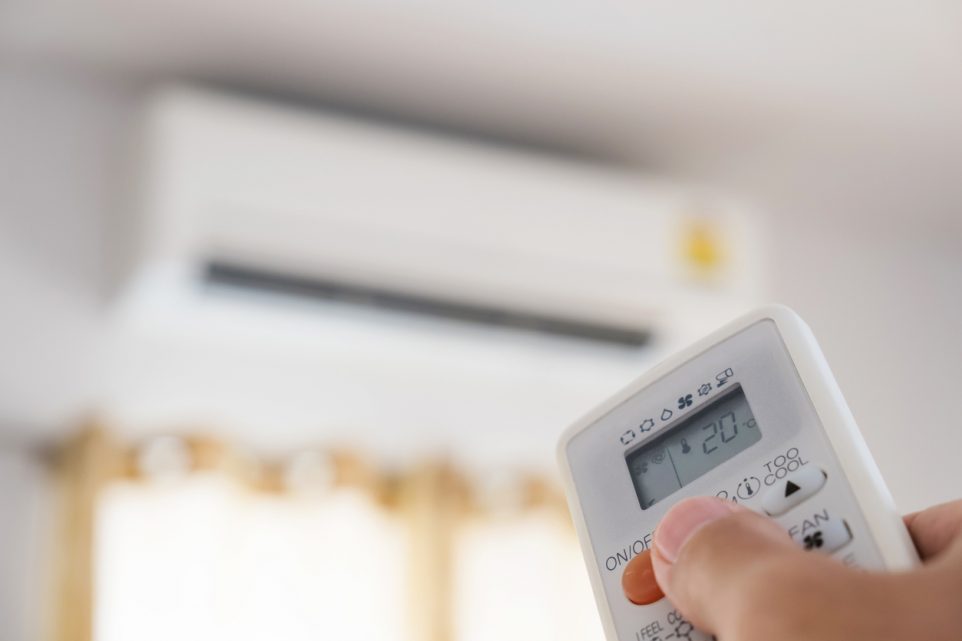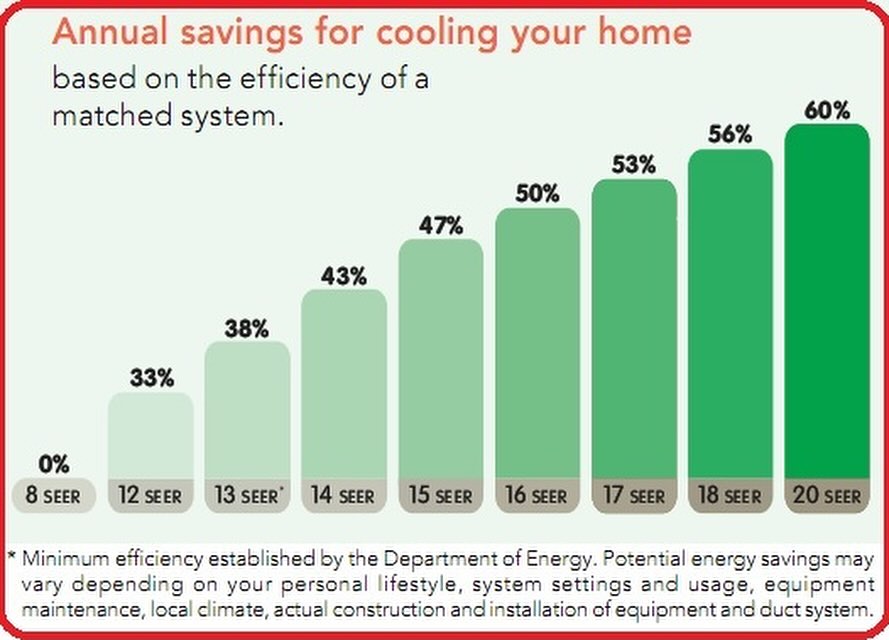Energy Efficient Air Conditioners: Are They Worth It?

As the summer heat intensifies, so does our reliance on air conditioning to keep our homes blissfully cool. But if you’re like me, while you absolutely relish the chill air, the rising utility bills and environmental concerns tied to older air conditioning units can be a bit of a buzzkill. It’s a common dilemma: we want comfort without the hefty costs and ecological footprint.
Energy-efficient air conditioners are designed not just to cool your space but to do so in a way that’s kinder to both your wallet and the planet. The evolution of air conditioning technology has ushered in models that minimize energy use, curb ozone depletion, and operate more quietly than ever before. Whether you’re considering replacing your old model or installing your first unit, the decision to go for an energy-efficient air conditioner is a breeze in terms of benefits. In this discussion, we’ll dissect how these systems work, what makes them a smarter choice, and how to select the perfect model for your living space.
What Makes an Air Conditioner Energy Efficient?
When it comes to blending energy efficiency with comfort, understanding what makes an air conditioner energy efficient is essential. The efficiency of a room air conditioner is typically measured by the Seasonal Energy Efficiency Ratio (SEER). This ratio is the calculation of the cooling capacity (in British Thermal Units or BTU per hour) to the power input (in watts). In simpler terms, a higher SEER rating means the air conditioner is more efficient, which translates to less power used for the same amount of cooling.
Understanding SEER Ratings
The Seasonal Energy Efficiency Ratio (SEER) is crucial in determining how efficient an air conditioner is during the cooling season. Essentially, SEER measures the ratio of cooling output over a typical cooling season divided by the energy consumed in watt-hours. It’s a bit like miles per gallon in a car—the higher the SEER rating, the more efficiently the air conditioner operates.
However, it’s important to note that a higher SEER rating doesn’t automatically guarantee cost savings. The initial cost of a high SEER unit can be significantly more than a lower-rated one. The real question is about the return on investment (ROI): How long will it take for the energy savings to offset the higher initial cost?

Consider a scenario where you are replacing an older AC unit or choosing between models with different SEER ratings. Using tools like online SEER Energy Savings calculators can be beneficial. These tools allow you to input specifics such as your current AC’s SEER rating, the size of your home, and your locality to estimate potential savings with different models.
For instance, upgrading from a 13 SEER to a 14 SEER air conditioner in a 1500 square foot home might show less dramatic savings over the lifetime of the unit, potentially making the investment questionable if your current system is relatively new. On the other hand, jumping from a 12 SEER to a 16 SEER model might present a more favorable ROI, thanks to greater energy efficiency and possibly available rebates.
How Do Energy Efficient Air Conditioners Work
Energy-efficient air conditioners work on a principle that may seem straightforward but involves sophisticated technology. Modern air conditioners often include inverter technology. Unlike traditional models that turn the compressor on and off to maintain room temperature—consuming significant energy each time it starts—the inverter technology allows the compressor to operate continuously at varying speeds. The compressor adjusts its speed according to the required temperature, which significantly reduces power consumption and enhances efficiency. It’s like adjusting your car’s speed smoothly rather than constantly stopping and starting.
How Much Energy Do Energy-Efficient Air Conditioners Save
Let’s break down the potential energy savings. Energy-efficient air conditioners can be startlingly efficient compared to traditional units. During peak operation, a traditional air conditioner pulled roughly 1.1 kilowatts, whereas the inverter model initially pulled about 1.8 kilowatts to cool the room. However, once the desired temperature was reached, the energy-efficient AC’s consumption dropped dramatically—to about 600 watts. This variable approach avoids the energy spikes associated with repeatedly turning off and on, leading to significant savings over time.
The savings are not just theoretical. Practical tests have shown that running an energy-efficient inverter air conditioner can result in substantial decreases in energy use. For instance, over a six-hour period, an efficient model used only 3.56 units of electricity, significantly less than older or non-inverter models might consume under similar conditions. The efficiency gains are more pronounced during cooler parts of the day or in well-insulated rooms, but even under intense conditions, such as a hot summer day, the savings are evident.
Window vs. Portable AC: Which One Saves More Energy?
Choosing between window and portable air conditioners often boils down to a debate on efficiency and convenience. Window units, long celebrated for their efficacy and simplicity, mount directly into a window, thereby saving floor space and avoiding the complexities of hoses or ducts. They typically expel condensation outside, eliminating the need for internal water drainage—a slick feature that underscores their hassle-free maintenance.
On the other hand, portable air conditioners have carved out their niche by offering unparalleled flexibility. Their design allows for easy setup and mobility, making them ideal for temporary situations or when frequent relocation is necessary. However, this convenience can come with a cost—energy efficiency. Particularly, single-duct portable models are known for their higher energy consumption, a trade-off that often surprises many users.
The Differences
To really dig into these differences, let’s look at an informal study where two different air conditioners—a window unit and a single duct portable unit—were tested under the same environmental conditions for three consecutive days during a heatwave. Both units were monitored for energy consumption using a power meter, and they operated concurrently over this period.
The results were intriguing. When comparing the kilowatt hours consumed relative to their BTU ratings, the efficiency of both types seemed nearly identical, which is surprising given the reputation of portable air conditioners for being energy hogs. However, this finding only scratches the surface of the real-world functionality of these units.
The key disadvantage of single-duct portable air conditioners lies not just in their energy use but in their operational inefficiency. These units often pull in cooled indoor air to cool their condensers and then exhaust it outside, which can lead to negative air pressure inside your home. This negative pressure, in turn, pulls in hot air from outside, counteracting the cooling effect and leading to less effective temperature control, a factor not directly observable through simple power consumption tests.
Which One Is Better?
So, while the initial tests might suggest comparable energy use between the window and portable air conditioners, the practical effectiveness of cooling your space could tilt in favor of the window units. The portable air conditioners might keep running just as much as the window units but struggle more to reduce room temperatures effectively—especially in extremely hot conditions. This inefficiency could lead to longer running times and, consequently, higher energy costs over time, despite what the raw energy consumption data shows.
What To Look for When Buying an Energy-Efficient Air Conditioner
This decision to upgrade isn’t only about potential savings on paper. If your existing system is outdated or requires expensive repairs, investing in a higher SEER model might make more sense. For a system nearing the end of its life, or if you’re facing high repair costs, opting for a new unit with a modest jump in SEER rating can provide both improved efficiency and reliability without the steep costs of the highest available ratings.
It’s also wise to factor in the specifics of your home and usage patterns. For example, if you live in a region with high cooling demands or if your home has poor insulation, investing in a higher SEER rating might offer better long-term savings. Additionally, if you’re considering going solar or making other significant energy-efficient upgrades to your home, pairing those with a high-efficiency AC system can maximize overall energy savings.
Ultimately, choosing the right energy-efficient air conditioner involves balancing upfront costs with long-term savings, considering your home’s specific needs, and understanding how different SEER ratings will impact your energy bills. While the allure of the highest SEER ratings is strong, the best choice needs to align with your financial goals, home size, local climate, and personal preferences regarding indoor comfort.